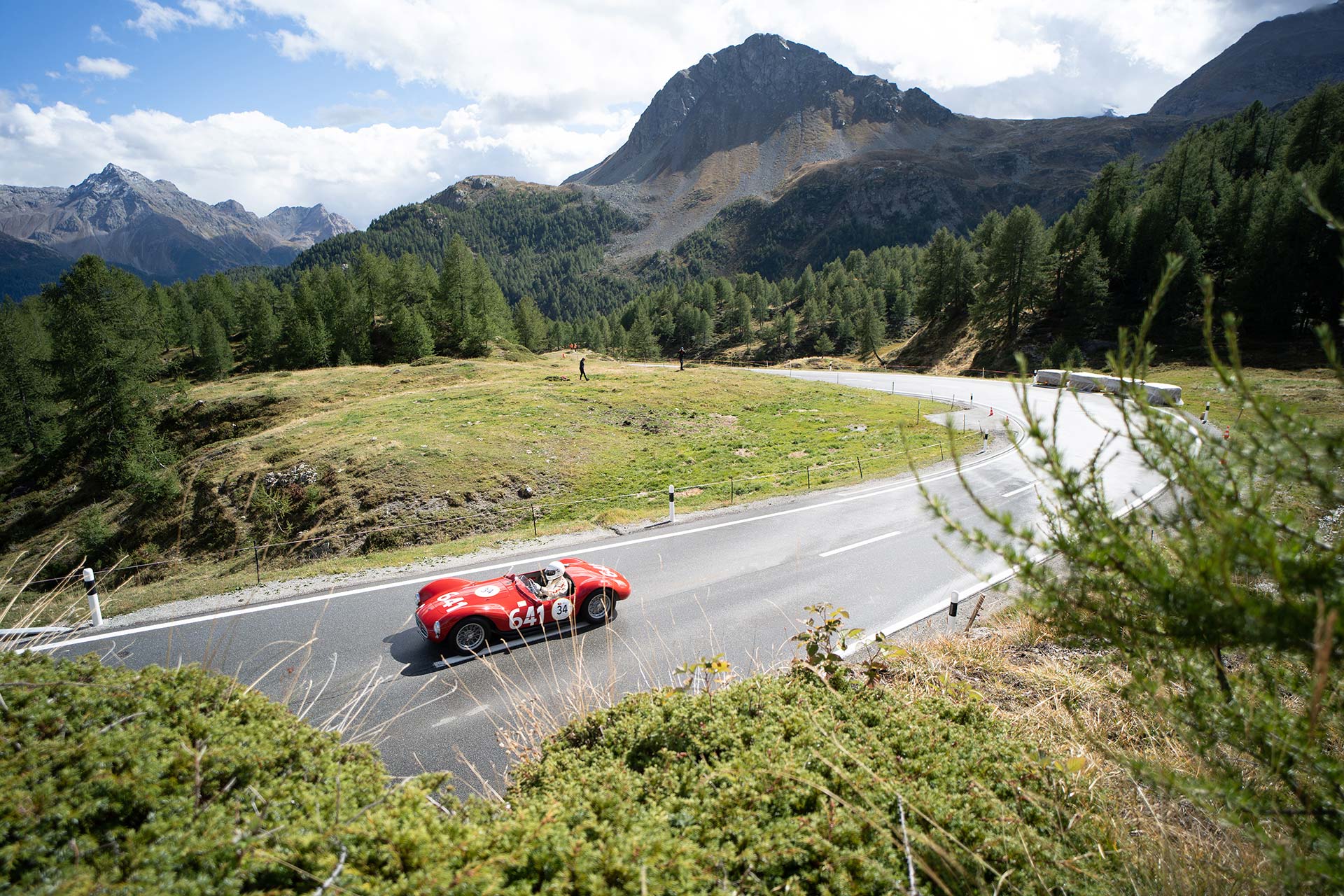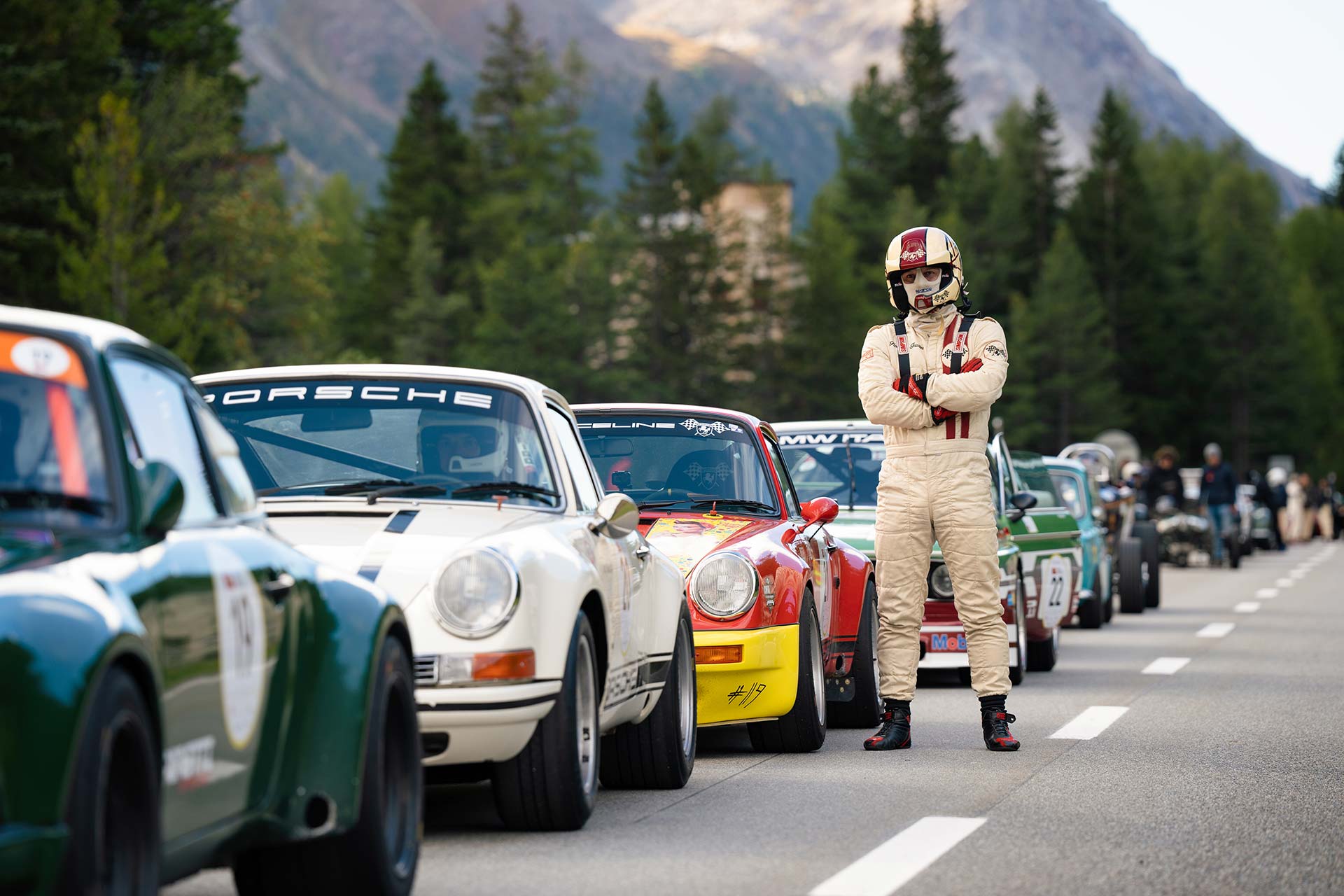Since 1929 - a passport that makes history.
The Bernina Pass between Poschiavo and the Engadin is not just an alpine connection, but also a stage for motorsport history. The first Bernina mountain races took place here in 1929 and 1930, with legends such as Hans Stuck conquering the winding route in his Austro-Daimler. With an average speed of 66.4 km/h, Stuck set new standards at the time.
The renaissance of the Bernina Gran Turismo.
After decades of silence, the Bernina mountain race was revived in 2015 as the Bernina Gran Turismo. Since then, the event has brought a selection of historic racing and sports cars back to the 5.7-kilometre route from La Rösa to the top of the pass every year. With over 50 bends and a difference in altitude of 450 metres, the route offers a unique challenge for man and machine.
More than just a race - an experience.
The Bernina Gran Turismo is not just a race against the clock, but a feast for all the senses. The mixture of historic vehicles, the breathtaking Alpine scenery and the passion of the participants creates an unrivalled atmosphere. Whether as a driver, spectator or helper - everyone is part of an event that combines tradition and modernity.

A meeting place for enthusiasts.
The Bernina Gran Turismo attracts participants and visitors from all over the world. From classic pre-war models to icons of the 1980s - the variety of vehicles reflects the rich history of motorsport. At the same time, the event offers space for exchange, admiration and shared experiences in one of Switzerland's most beautiful regions.
A look into the future.
With the Bernina Gran Turismo, a tradition that once characterised the Engadin lives on. At the same time, the event sets new standards in terms of organisation, safety and participant experience. It is an example of how historical events can be transferred to modern times while remaining authentic.
